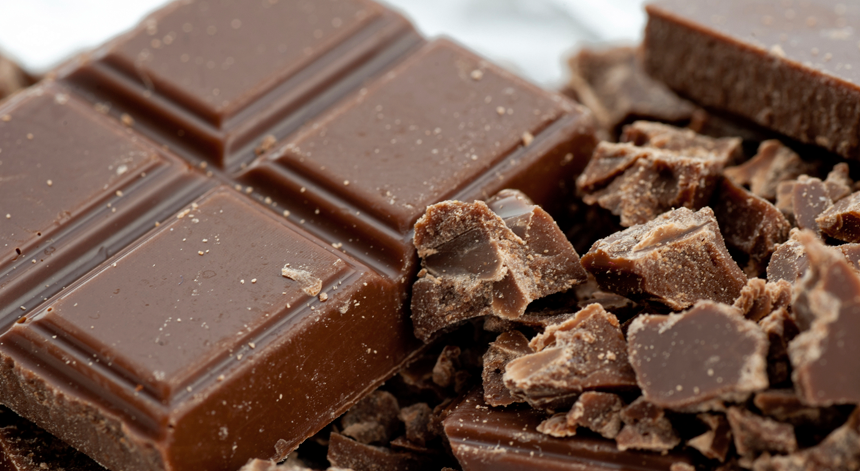Milking chocolate for its health benefits
Researchers find a way to give milk chocolate the same nutritional punch as dark chocolate.

The process for making milk chocolate removes most of its natural — and healthy — antioxidants. Scientists have now found a way to add antioxidants back in without adding any bitterness.
standret/iStockphoto
You may have heard that dark chocolate is healthier than milk chocolate. If you are like many people, though, you prefer the sweeter, less bitter type. That means you’re missing out on dark chocolate’s heart benefits. But you may not have to accept this limitation much longer. Researchers have just figured out how to give milk chocolate the same nutritional punch as the dark stuff. And they did it by adding a surprising ingredient. Even better news: The process doesn’t change the treat’s flavor.
No one should eat lots of chocolate thinking that it will make them healthier. Chocolate, after all, usually contains fat and sugar. But dark chocolate does have some chemicals that research has linked to heart health. Known as antioxidants, these chemicals show up in many fruits, vegetables and nuts.
Antioxidants can stop a chemical reaction in the body known as oxidation. Too much oxidation can damage cells. Research has shown that oxidation underlies a host of illnesses, including cancer and heart disease.
All chocolate is made from cocoa beans, which contain antioxidants. To produce chocolate, the beans are broken down into cocoa solids and a type of fat called cocoa butter. Put those two parts back together and you have unsweetened chocolate, which doesn’t taste very good. Adding sugar produces the tastier, though still somewhat bitter, dark chocolate.
Milk chocolate contains cocoa solids and cocoa butter. It, however, has more sugar than dark chocolate. It also has milk or cream. This makes the candy lighter in color and smoother in taste. But gram for gram (or ounce for ounce), milk chocolate contains less cocoa than dark chocolate. That means it also has fewer antioxidants.
Yet scientists can’t just add antioxidants to make milk chocolate healthier — without affecting its taste, anyway. After all, these chemicals tend to taste bitter. “It gives you that mouth-puckering feeling,” explains Lisa L. Dean. This food scientist is an author of the new study. Dean works for the U.S. Department of Agriculture at North Carolina State University in Raleigh.
Dean and her team now report having found a way to top up the antioxidants in milk chocolate — without making it bitter. Their secret ingredient? Peanut skin extract. (An extract is a substance, often in concentrated form, that has been removed from its natural source.) She and her colleagues described their new chocolate recipe in the November Journal of Food Science.
Not such a nutty idea
The researchers weren’t actually trying to make a healthier milk chocolate. They were merely looking for a way to use up peanut skins. Most peanuts in the United States go to make peanut butter. Their skins end up buried as wastes in landfills.
Recalls Dean: “We thought, what can we do with this food waste?” She and her team decided to extract antioxidants from the skins. Then, to mask the bitter taste of the antioxidant, they mixed the peanut-skin extracts with an edible powder called maltodextrin. It’s made from starchy foods such as potatoes, rice or wheat. With a slightly sweet taste, maltodextrin is a common ingredient in processed foods such as potato chips and salad dressings.
Next, the team added the mixture to milk chocolate. This gave the chocolate antioxidant the levels typical of dark chocolate. Best of all, there was no change in the candy’s taste.
Just to be sure, the team asked 100 volunteers to sample three pieces of milk chocolate. Only one piece in the three contained the peanut-skin extract and maltodextrin.
Eight in every 10 volunteers tasted no difference between the regular milk chocolate and doctored sweet. The other 20 percent picked up on some extra bitterness. These volunteers are what scientists call supertasters. They are particularly sensitive to bitter tastes. Dean says about 20 percent of people are supertasters. That means that few people should notice whether antioxidants had been added to milk chocolate.
Some candy makers are experimenting with adding antioxidants to their milk chocolate. But Dean says she hasn’t heard of any who have used peanut extracts.
“By using an extract, you can put in tiny amounts so it doesn’t affect flavor,” she says. Dean cautions that milk chocolate containing peanut extracts would need clear labels so that people with peanut allergies could avoid it.
Suzanne Johanningsmeier studies food science for USDA at North Carolina State, but was not involved in this study. Roughly 100 million pounds of peanut skins are thrown out every year, she notes. The new research, she observes, could “reduce food waste by using peanut skins to create a new, health-boosting food ingredient.”







